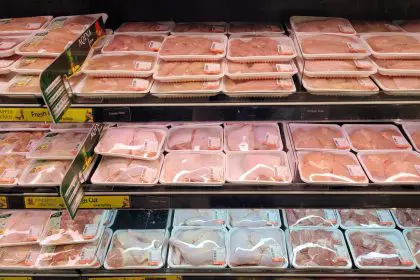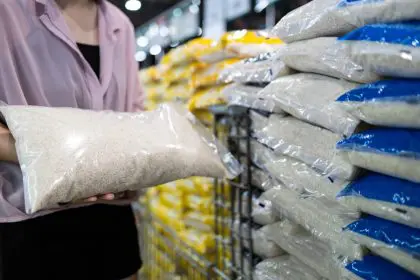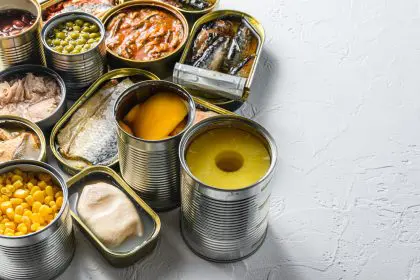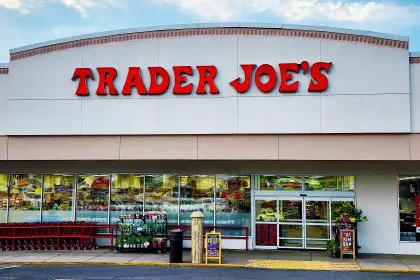Federal health officials have intensified warnings about a multistate tomato recall after discovering the contamination could prove fatal to consumers. The Food and Drug Administration elevated its alert status as the recall expanded to cover multiple distributors across numerous states, creating widespread concern about potentially dangerous produce still in circulation.
The contamination crisis began with a voluntary recall in early May but has since grown into a significant public health concern affecting grocery stores and consumers from the Southeast to the Midwest. Health authorities now warn that the salmonella bacteria present in these tomatoes could survive for extended periods, particularly in frozen storage conditions.
Initial contamination discovery
The recall originated when Williams Farms Repack LLC identified potential salmonella contamination in H&C Farms Label tomatoes distributed during late April. These contaminated tomatoes reached wholesalers across three southeastern states between April 23 and 28, marking the beginning of what would become a much larger food safety crisis.
The affected tomatoes came packaged in various sizes, from small three-packs suitable for individual households to large 25-pound commercial bags used by restaurants and food service operations. This wide range of packaging sizes increased the potential exposure across different consumer markets and made tracking the contaminated products more challenging for health officials.
Federal investigators have not yet determined the source of the contamination, leaving questions about how the dangerous bacteria entered the food supply chain. This uncertainty has prompted authorities to take aggressive action to prevent further exposure while the investigation continues.
Recall expansion across multiple states
- Ray & Mascari Inc involvement began when the company announced its own recall of four-pack Vine Ripe tomatoes on May 2. The company received notification from Hanshaw & Caping Farms in Immokalee, Florida, about the potential salmonella presence, prompting immediate action to remove products from store shelves.
- Gordon Food Service Stores distribution affected customers across eleven states, including Illinois, Indiana, Kentucky, Michigan, Missouri, Mississippi, New York, Ohio, Pennsylvania, Tennessee, and Wisconsin. These stores serve both individual consumers and commercial food service operations, multiplying the potential exposure.
- Southeastern distribution network initially covered South Carolina, North Carolina, and Georgia through the original Williams Farms Repack LLC recall, establishing the foundation for what would become a much broader contamination concern.
The expansion of affected areas demonstrates how modern food distribution networks can rapidly spread contaminated products across vast geographic regions, making coordinated recall efforts essential for public safety.
Frozen storage complications
Health authorities express particular concern about tomatoes that consumers may have frozen for future use. Unlike many bacteria that cannot survive freezing temperatures, salmonella demonstrates remarkable resilience in cold, wet environments like home freezers.
The bacteria can remain viable for weeks in frozen conditions, meaning consumers who stored affected tomatoes months ago could still face health risks when they eventually use the produce. This extended survival period significantly complicates the recall timeline and requires ongoing vigilance from consumers even after the initial distribution period ended.
Freezer storage also makes identification more challenging, as consumers may not remember purchase dates or specific brands once products are removed from original packaging and stored in freezer bags or containers.
Health risks and symptoms
Salmonella infection can cause severe illness requiring medical attention, particularly in vulnerable populations including young children, elderly individuals, and those with compromised immune systems. The bacteria triggers a range of uncomfortable and potentially dangerous symptoms that typically appear within 12 to 72 hours after consumption.
- Gastrointestinal symptoms include severe diarrhea that may contain blood, intense stomach cramping, and persistent nausea leading to vomiting. These symptoms can cause dangerous dehydration, especially in vulnerable individuals.
- Systemic effects involve fever that may spike high enough to require emergency treatment, along with general weakness and fatigue that can persist for days or weeks after initial infection.
- Severe complications can develop when the infection spreads beyond the digestive system, potentially affecting the bloodstream and requiring hospitalization for intravenous treatment.
Consumer safety measures
Federal authorities urge immediate disposal of any potentially affected tomatoes, regardless of whether they appear fresh or have been frozen for storage. Consumers should not attempt to cook or process the tomatoes, as proper elimination of salmonella requires specific temperature and time combinations that home cooking may not achieve reliably.
Thorough cleaning of any surfaces, containers, or utensils that contacted the suspect tomatoes becomes essential to prevent cross-contamination. Standard dishwashing may not eliminate all bacteria, so bleach solutions or commercial sanitizers provide better protection for food preparation areas.
Anyone who consumed potentially contaminated tomatoes and experiences symptoms should seek medical attention promptly, particularly if symptoms worsen or persist beyond normal expectations for foodborne illness.
Current status and ongoing investigation
- No reported illnesses have been confirmed in connection with this recall, suggesting that swift action by distributors and health authorities may have prevented widespread exposure. However, the incubation period for salmonella means cases could still emerge in coming weeks.
Health officials continue investigating the contamination source while monitoring for additional affected products or distributors. The complex nature of modern food supply chains means other related products could potentially be involved as the investigation progresses.
Prevention and food safety awareness
This recall highlights the importance of tracking food purchases and maintaining awareness of ongoing safety alerts. Consumers can protect themselves by regularly checking FDA recall notices and maintaining records of grocery purchases, particularly for perishable items they may freeze for later use.
Proper food handling practices remain the best defense against foodborne illness, including thorough washing of all produce before consumption and maintaining clean preparation surfaces. However, washing alone cannot eliminate salmonella from contaminated produce, making recall compliance essential for safety.
The tomato recall serves as a reminder that food safety requires vigilance from producers, distributors, retailers, and consumers working together to identify and address contamination before it causes widespread illness or death.
















